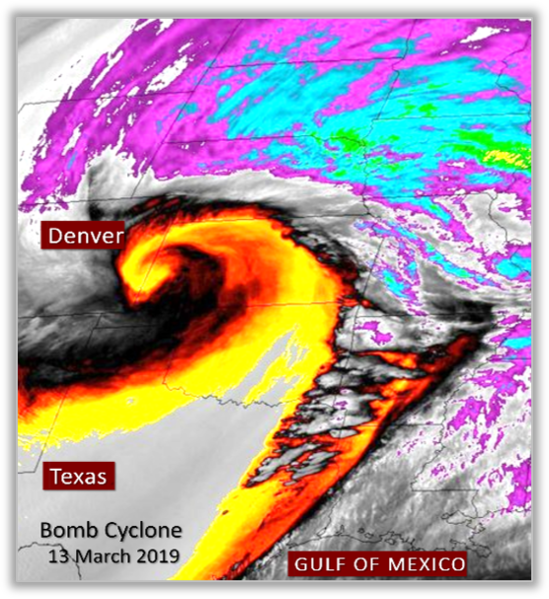Bomb cyclone is an area of rapidly deepening low-pressure system that is associated with a large drop in atmospheric pressure over a short time period. It occurs when a large air mass moves rapidly in the atmosphere, usually due to a cold front, and the pressure drops quickly. This causes strong winds and heavy rain, which can cause damage and disrupt transportation. These types of storms are most common in the winter months in the United States and Canada.
Bomb Cyclone Features
Bomb cyclones are characterized by a rapid drop in pressure and strong winds. The pressure drop can be as much as 24 millibars in 24 hours. These storms can also produce heavy rainfall, thunderstorms, large hail, and tornadoes. They often move quickly and can last for several days.
Bomb Cyclone Formation
Bomb cyclones form when an area of warm, moist air clashes with an area of cold, dry air. This creates a deep area of low pressure, which draws in more air from surrounding areas. As warm air rises, it cools and forms clouds and precipitation. The resulting pressure drop and strong winds cause the storm to rapidly deepen and move.
Bomb cyclones can cause significant damage, so it is important to pay attention to weather forecasts and warnings.
Bomb Cyclone Types
Bomb cyclones come in two types: winter bombs and summer bombs.
Winter bombs are more common and occur when cold air from the Arctic rushes southward, often accompanied by a strong storm system. These storms can bring strong winds and heavy snowfall.
Summer bombs occur when hot, humid air from the tropics moves northward and combines with a cold front. These storms can bring heavy rain and severe thunderstorms.
How does a Bomb Cyclone Differ from a Hurricane?
A bomb cyclone is different from a hurricane in several ways.
- While both are rapidly deepening areas of low pressure, hurricanes typically form over warm ocean waters and move slowly, while bomb cyclones form over land and move quickly.
- Hurricanes usually have sustained winds over 74 mph, while bomb cyclones usually have winds between 50-70 mph.
- Lastly, hurricanes often cause more damage due to the high winds and flooding, while bomb cyclones usually cause more localized damage due to the heavy rain, large hail, and tornadoes.
Also read – Super Cyclone Amphan

